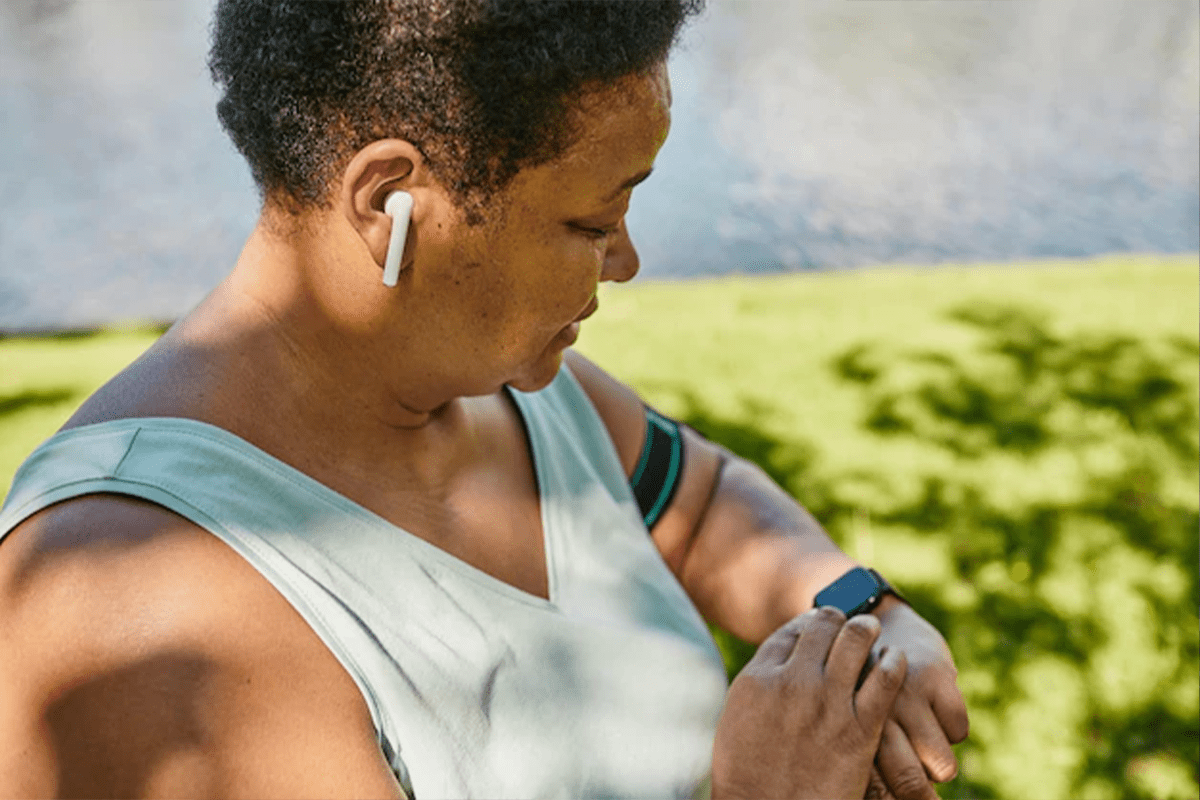
- What is Remote Therapeutic Monitoring?
- How is RTM Different from RPM?
- How can orthopedic practices use Remote Therapeutic Monitoring?
- How can employers use Remote Therapeutic Monitoring?
Remote Therapeutic Monitoring (RTM) unlocks new treatment pathways by collecting and seamlessly sharing therapeutic data via a medical device, often coupled with specific software, to a care provider.
The increased data and capability allows the care team to benchmark patient progress, therapy adherence, therapy response and much more. This results in improved patient outcomes while unlocking at-home therapy options and remote support potential via encrypted messaging and/or telemedicine.
But what exactly is RTM and how can providers and employers alike benefit from using this new technology?

What is Remote Therapeutic Monitoring?
Remote therapeutic monitoring (RTM) allows healthcare providers and employers to leverage virtual patient monitoring tools for musculoskeletal (MSK) conditions. This therapeutic approach relies heavily on telemedicine video conferencing technology and may use wearable devices to communicate clinician instructions to the patient while relaying patient data back to the clinical team used to improve adherence and outcomes.
The idea is that the virtual patient visit, combined with remote monitoring tools, can bring physical therapy or other support for musculoskeletal conditions directly to the patient wherever they may be. In these scenarios, the patient does not have to travel to receive their care, and the increased data and automated analysis allows for program modification and/or intervention by the care team. This ultimately helps reduce recovery time while improving treatment outcomes before or after a surgical procedure.
Providers are able to bill for RTM and employers are able to scale wellness and treatment programs quickly while providing leading edge care to their employees, regardless of their location. Whether RTM is being used for providers or employers, the care pathways are wellness oriented and individualized for both surgical and non-surgical rehabilitation and recovery.

How is RTM Different from RPM?
Remote Patient Monitoring (RPM) has long been in use for monitoring chronic healthcare conditions such as COPD, diabetes, or heart disease. RPM uses telemedicine’s digital technologies to capture remote patient physiological data and relay it to the clinical team. Typically, RPM captures blood pressure, lung function, or glucose levels.
RTM is different in that it seeks to track a patient’s rehabilitative routine by monitoring behavioral adherence to a treatment plan or pain levels or any non-physiological data that is critical to a successful patient outcome.
RPM typically uses a remote sensing device to track patient physical data. With RTM you don’t need a specialized Internet of Things (IoT) remote sensor and can instead use something as simple as software viewed from a mobile device or coupled with an Apple Watch for example.

How Can Employers Use RTM?
Musculoskeletal conditions such as lower back and neck pain are in the top 10 of the most expensive illnesses to treat in the U.S. When an employee experiences a musculoskeletal injury on the job, employers fall victim to employee absenteeism, productivity declines, and higher healthcare and workers’ compensation costs.
However, the employer has a unique opportunity to use RTM to help cut some of these costs, provide better care for their injured workers, and get them back to work more quickly than without this service. Even if an injury has not occurred from an on the job accident, RTM wellness programs can be used to help employees miss fewer work days due to chronic MSK issues by engaging in programs that increase mobility and reduce chronic pain.
RTM can also be used to perform job-specific pre-employment and post-hire functional assessments so employers can screen for existing or potential musculoskeletal issues with employees. If a potential issue is found, employees can enter into a proactive wellness program to avoid further injury and missed time away from work.
The Claims Journal states, “Virtual care may become the new standard in workers’ comp.” Introducing telemedicine coupled with RTM services gives companies a way to immediately triage on the job injuries to determine the best course of treatment, and then securely leverage data to improve outcomes. The knee jerk response to any injury on site is often to take the injured employee to the emergency room. The problem is that the majority of injuries on site at American businesses are often minor strains or sprains so that an ER trip becomes a costly overkill when instead rest, physical therapy, ice, or other non-invasive treatments are simply all the employee needs. Instead of running to the ER for every injury, a clinician can come to the site virtually on a digital device, see the location and the patient and make an assessment as to next steps.
RTM may come into play when that injured worker has a musculoskeletal condition that requires physical therapy or other off-site therapeutic approaches. Using telemedicine technology to monitor that employee spares them the necessity of traveling to the doctor’s office. This cuts down on time away from work for checkups; the clinician again can conduct the visit virtually. Advanced data from the patient can be sent to orthopedic experts to ensure healing, progress tracking, and best possible outcomes in the shortest amount of time.
RTM can also become part of an ergonomics program at the company where a remote clinical professional can track and prevent injuries even before they occur. For example, an occupational healthcare professional can virtually tour a business and spot employee behaviors that lead to injury as well as problems within their workspace that can put them at risk.
If you’d like to discover how RTM can benefit your practice or your company further, contact one of our RTM specialists today to experience how this new technology can improve care and reduce time away from work before or after an injury.

How Can Orthopedic Practices Use RTM?
RTM gives orthopedic clinical care teams a way to support patients throughout their orthopedic journey, and as of 2022, is a billable service to generate revenue using new Centers for Medicare & Medicaid Services (CMS) codes.
Continuous RTM allows clinicians to respond more quickly to the individual patient’s treatment progress, which in turn can improve health outcomes and patient satisfaction.
The benefits of RTM for the typical clinician include:
- Ongoing communication and monitoring of the patient’s recovery process
- Quicker documentation and reporting of clinical conditions
- Lower office overhead; these patients remain at home while you treat them
- Capturing an additional revenue stream
- Improving patient engagement
- Increasing efficiency in patient care delivery
CMS recently approved the following reimbursement codes for RTM:
- CPT Code 98975 covers initial set-up and patient training on how to use the program
- CPT Code 98976 covers the first instance of ongoing monitoring
- CPT Code 98977 covers ongoing monitoring over a period of at least 16-sequential days
- CPT Code 98980 covers the clinician’s time during an interactive patient communication (first 20-minutes)
- CPT Code 98981 covers additional time with the caregiver
While RTM is becoming a highly effective way to leverage data to improve patient outcomes (while still experiencing the benefits of providing care remotely) clinicians aren’t the only ones that can benefit from this service.
Employers can see extensive benefits from using RTM services during functional assessment screens or following a workplace injury.



